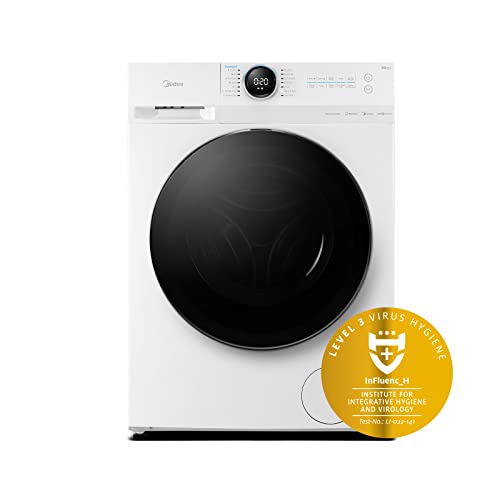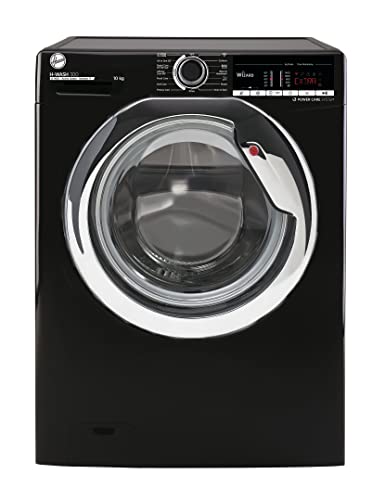The Three Greatest Moments In 10kg Front Loader History
페이지 정보

본문
Why Buy a 10kg washing machines Front Loader?
 The 10kg front loader is ideal for large loads of laundry, with plenty of space for 10kg Front Loader big wash cycles and 13 wash programs, including handwash. With smart tech and advanced features, it's a perfect partner for home laundry.
The 10kg front loader is ideal for large loads of laundry, with plenty of space for 10kg Front Loader big wash cycles and 13 wash programs, including handwash. With smart tech and advanced features, it's a perfect partner for home laundry.
Front loaders typically take longer to wash, are not available in larger capacities and frequently be affected by mildew and mould. However, they are more energy and water efficient than top loaders.
Energy
The primary energy cost in a 10kg front loader is electricity to heat water to operating temperature, and to run the motor. These costs can be offset by less energy usage in operation when in comparison to top-loaders, including less power during the agitation cycle as well as during spin, and less water. Some machines have a low-water wash option which makes use of significantly less water than the cotton cycle, saving on both energy and water usage.
In general, front-load washers use less detergent than top-loaders, 10kg front loader and the tumbling action in the drum is able to entrain air which reduces foamy suds and overflows, but not affecting the cleaning process. However the door seals as well as bellows may be more prone to wear than those found in top-loaders. The mechanical agitator in top-loaders can also cause significant wear on clothing fabrics. It sways and drops clothes constantly, forcing them against each other. The degree of abrasion can be measured by the amount of fabric accumulating in a clothes dryer's lint filter because lint largely consists of stray fibers detached from clothes during drying and washing. Many top-loaders are designed to operate at slower speeds and may include a "freshening cycle" to clean the mechanical gears or bellows regularly.
Water
 Top-loading washers require an impeller or an agitator to force soap and water through the clothes, causing mechanical wear and abrasion. Front-loaders however employ paddles to gently move clothes around a spinning drum during cleaning, thereby reducing wear. The rate of wear can be approximated by the amount of lint collected in dryer lint filtering systems, which consists of stray threads detached from clothes during washing and drying.
Top-loading washers require an impeller or an agitator to force soap and water through the clothes, causing mechanical wear and abrasion. Front-loaders however employ paddles to gently move clothes around a spinning drum during cleaning, thereby reducing wear. The rate of wear can be approximated by the amount of lint collected in dryer lint filtering systems, which consists of stray threads detached from clothes during washing and drying.
Since front-loaders require less water than top-loaders which means they are less prone to leakage. True front-loaders will require a bellows seal or seal to prevent water from spraying out of the open door during operation, but they do not typically need to be maintained in the same way as those on top-loaders.
Additionally, front-loaders are able to operate with hot or cold water and a lot of them without the need for a heating source, making them more energy efficient than top-loaders. This efficiency can lower operating costs for the same laundry load, especially in locations where water, energy, and detergents are expensive.
 The 10kg front loader is ideal for large loads of laundry, with plenty of space for 10kg Front Loader big wash cycles and 13 wash programs, including handwash. With smart tech and advanced features, it's a perfect partner for home laundry.
The 10kg front loader is ideal for large loads of laundry, with plenty of space for 10kg Front Loader big wash cycles and 13 wash programs, including handwash. With smart tech and advanced features, it's a perfect partner for home laundry.Front loaders typically take longer to wash, are not available in larger capacities and frequently be affected by mildew and mould. However, they are more energy and water efficient than top loaders.
Energy
The primary energy cost in a 10kg front loader is electricity to heat water to operating temperature, and to run the motor. These costs can be offset by less energy usage in operation when in comparison to top-loaders, including less power during the agitation cycle as well as during spin, and less water. Some machines have a low-water wash option which makes use of significantly less water than the cotton cycle, saving on both energy and water usage.
In general, front-load washers use less detergent than top-loaders, 10kg front loader and the tumbling action in the drum is able to entrain air which reduces foamy suds and overflows, but not affecting the cleaning process. However the door seals as well as bellows may be more prone to wear than those found in top-loaders. The mechanical agitator in top-loaders can also cause significant wear on clothing fabrics. It sways and drops clothes constantly, forcing them against each other. The degree of abrasion can be measured by the amount of fabric accumulating in a clothes dryer's lint filter because lint largely consists of stray fibers detached from clothes during drying and washing. Many top-loaders are designed to operate at slower speeds and may include a "freshening cycle" to clean the mechanical gears or bellows regularly.
Water
 Top-loading washers require an impeller or an agitator to force soap and water through the clothes, causing mechanical wear and abrasion. Front-loaders however employ paddles to gently move clothes around a spinning drum during cleaning, thereby reducing wear. The rate of wear can be approximated by the amount of lint collected in dryer lint filtering systems, which consists of stray threads detached from clothes during washing and drying.
Top-loading washers require an impeller or an agitator to force soap and water through the clothes, causing mechanical wear and abrasion. Front-loaders however employ paddles to gently move clothes around a spinning drum during cleaning, thereby reducing wear. The rate of wear can be approximated by the amount of lint collected in dryer lint filtering systems, which consists of stray threads detached from clothes during washing and drying.Since front-loaders require less water than top-loaders which means they are less prone to leakage. True front-loaders will require a bellows seal or seal to prevent water from spraying out of the open door during operation, but they do not typically need to be maintained in the same way as those on top-loaders.
Additionally, front-loaders are able to operate with hot or cold water and a lot of them without the need for a heating source, making them more energy efficient than top-loaders. This efficiency can lower operating costs for the same laundry load, especially in locations where water, energy, and detergents are expensive.
- 이전글What's The Job Market For Best Self-Emptying Vacuum Professionals? 24.04.29
- 다음글The 10 Most Terrifying Things About Window Repair Near Me 24.04.29
댓글목록
등록된 댓글이 없습니다.

